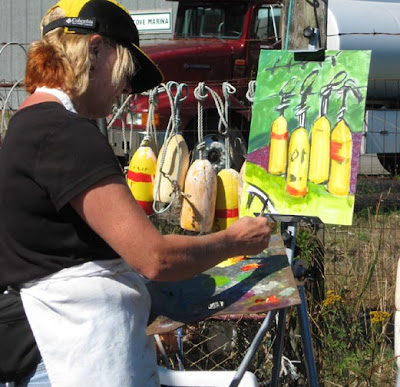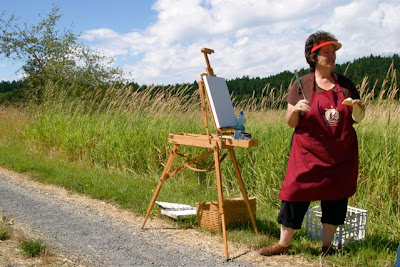
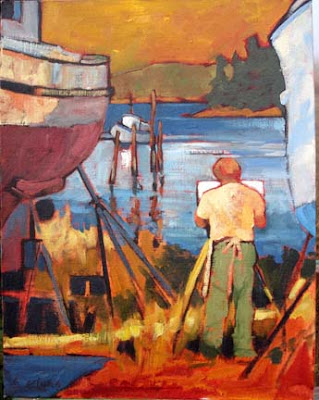
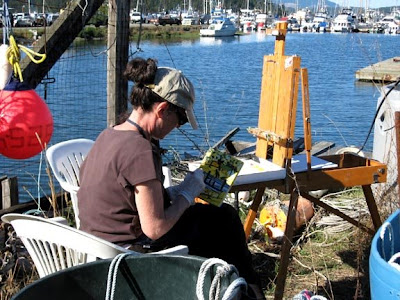
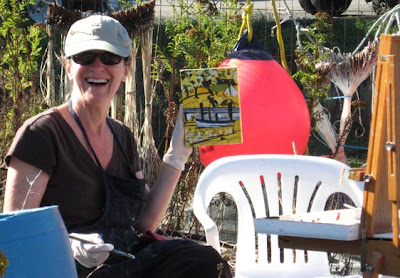
*
*
*
*
*
*
*
*
*
*
*
*
*
*
*
*
*
*
*
*
What to bring to the workshop? Load supplies into a basket or 5 gallon bucket for easy transportation to a painting site.
sketchbook and pencils for sketching ideas and thumbnails.
french easel, ideal. I prefer the larger version. With a french easel an instant studio can be set up anywhere.
brushes, 3/4", 1/2" and 1/4 filberts are great, shorter bristle recommended. Palette knife...good for mixing, softening edges, and painting with. A slightly rounded tip with blade about 1 1/2 inches long and 1/2 wide is a good versatile size.
Palette, the stay-wet palette with the bright blue lid and 12 x 16" paper palette to lay inside. Paper palettes are handy on location, combined with the palette box.... easier clean up. If you are ordering online, see if gray palette paper is available.
Odorless mineral spirits, OMS, small bottle.
For medium, I like liquin, galkyd, or galkyd-lite by Gamblin. We will use galkyd as a glaze on our second day.
Rags, old towels or t-shirts cut up are great. If you have the time, throw your newly cut rags in the wash to get rid of the lint balls.
2 or 3 small sized canvases these are all good sizes: 9 x 12,11 x 14, 12 x 16" is about the maximum size for a plein air. Linen or Canvas pad fine too.
Gloves, & Apron.
Lunch, water bottle, stool if you like to sit.
Oil Paint:
I paint with a limited palette on location. With just primaries, it's possible to mix any color. Warm and cool of each primary,2 reds, 2 blues and 2 yellows, and a couple of earth tones, with white will be the basis for any color!
Red: Cadmium red light, pick this if you only pick one red.make sure it's red light.
Alizarin Crimson. good mixing color. One more color to add would be a magenta or what is called Quinacrodone Magenta. It's difficult to make clean purples out of Alizarin.
Yellow: Cadmium Yellow Medium and Cadmium Yellow Light.Pick yellow medium of you only pick one.
Blue: French Ultramarine Blue, a warm blue if you pick one blue. For an additional cool blue,there are a lot of choices....Manganese blue, mild... Thalo blue, windsor blue, both strong pigments.
Earth colors: raw sienna, very good. Yellow ochre and umbers.
White: I like Gamblin's blend of titanium and zinc. Permalba brand good too.
In plein air painting, you don't need a lot of colors, less can be more.This list gives you a warm and cool of each of the primaries.
We will have a color mixing session to understand the color wheel and how to achieve great results and color control with a limited palette.
The cost of the workshop is $225.
Limit the size of the group to 15. Artists of any level may join.
If you'd like to work in another medium, that's fine, and if you have any questions about what to bring, call me.
Please call with any questions, my toll free number is 1 866 374 4272
locally at 378 2638, or email: anniehowelladams@gmail.com
We have overnight accommodations above out antique store, Nichols Street Suites.
I hope you can join us!!













